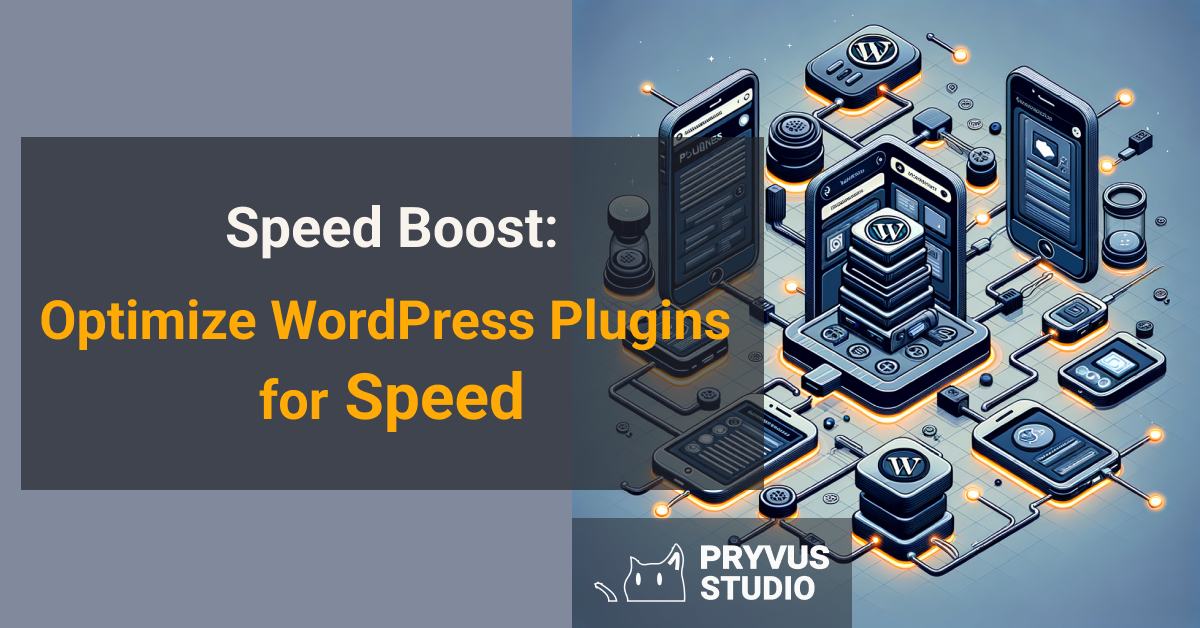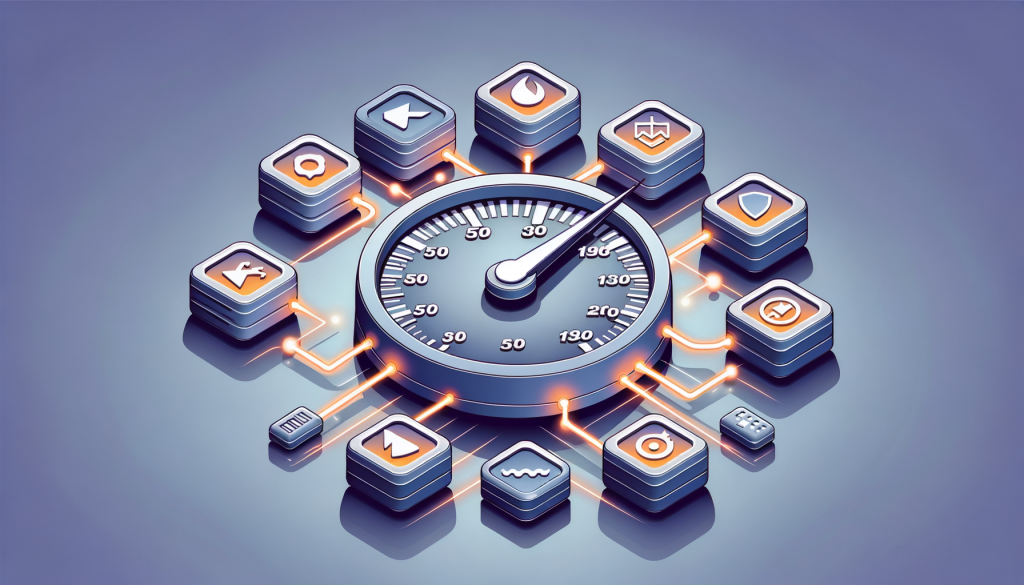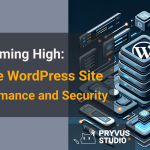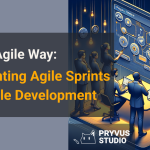
WordPress plugins can make or break your site’s speed.
Finding the right balance between functionality and performance is crucial. This article promises practical steps towards a speed-optimized WordPress site.
In this article, you will learn:
- How to identify and manage slow plugins
- Best practices for plugin selection and management
- Techniques to optimize plugins for speed
Understanding WordPress Plugin Performance
Let’s dive into the world of WordPress plugins. These tools are vital for extending your website’s functionality. But, they can also slow it down. Why? Each plugin adds extra code that your site needs to load. More code means more load time. Simple, right?
Every plugin impacts your website’s speed, but not all in the same way.
Some plugins are lightweight and efficient. Others, not so much. They can be bloated with features you don’t need. This bloat can drag your site’s speed down. Think of it as trying to run with a heavy backpack. It’s possible, but it’ll slow you down.
So, how do we tackle this? First, we assess the situation. Look at what each plugin does. Ask yourself, “Do I really need this feature?” If the answer’s no, it might be time to say goodbye to that plugin.
Next, consider plugin quality. Pryvus Studio, with its focus on custom software development, emphasizes the importance of choosing well-coded plugins. A well-coded plugin is like a well-oiled machine. It runs smoothly and efficiently.
But it’s not just about adding or removing plugins. It’s also about optimizing the ones you keep. This involves updates, custom settings, and sometimes a bit of code tweaking.
In summary, understanding plugin performance is the first step towards a faster website. It’s about making smart choices and optimizing what you have. This ensures your site runs smoothly, keeping your visitors happy and engaged.
Identifying Slow Plugins and Their Impact
When it comes to optimizing your WordPress site, identifying slow plugins is a crucial step. Not all plugins are designed with performance in mind, leading to potential slowdowns. But how can you tell which plugins are affecting your site’s speed? There are tools and methods to pinpoint the culprits.
Identifying and addressing slow plugins is key to maintaining optimal website performance.

First, use performance testing tools like GTmetrix or Pingdom. These services provide insights into how each plugin affects your websites loading time. Next, consider the plugins functionality. Is it essential? If not, it might be worth disabling it temporarily to test its impact on site speed.
Another indicator of a plugin’s performance is its update frequency. Regular updates often mean better optimization and security, reducing the likelihood of it slowing down your site. However, it’s not just about the number of plugins but also their quality. Pryvus Studio emphasizes the importance of selecting plugins that are well-coded and designed for speed.
Once you’ve identified slow plugins, what’s next? You can either replace them with faster alternatives or optimize their settings. Sometimes, simple tweaks can significantly improve performance without sacrificing functionality.
Remember, the goal isn’t to eliminate plugins entirely but to create a balanced, efficient site. By carefully managing your plugins, you can enhance your site’s speed, user experience, and SEO ranking.
Techniques for Plugin Optimization
- Update plugins regularly to ensure optimal performance.
- Limit the number of active plugins to only those necessary for your sites functionality.
- Use caching plugins to reduce load times.
- Consider lightweight alternatives for heavy plugins.
In conclusion, monitoring and maintaining plugin performance is an ongoing task. By staying vigilant and making informed choices, you can significantly improve your site’s speed and overall performance.
Best Practices for Plugin Selection and Management
Choosing the right plugins for your WordPress site is more art than science. It’s about understanding your site’s needs and matching them with plugins that are well-coded, regularly updated, and optimized for speed. The goal? A seamless, efficient website that serves your users without a hitch.
The cornerstone of a fast, reliable WordPress site lies in careful plugin selection and management.
Understand Your Needs: Before adding any plugin, ask yourself if it’s truly necessary. Every plugin you add introduces additional code that can potentially slow down your site. Prioritize functionality over features.
Quality Over Quantity: Opt for plugins that are reputable and well-supported. Check user reviews and ratings, update frequency, and compatibility with your version of WordPress.
Keep Them Updated: Regularly update your plugins to ensure optimal performance and security. Developers frequently release updates that improve speed and patch security vulnerabilities.
Test for Performance: Use tools like GTmetrix or Pingdom to test how each plugin affects your site’s speed. If a plugin significantly slows down your site, consider finding a lighter alternative.
Manage With Care: Periodically review your plugins. Remove any that are no longer necessary or that duplicate the functionality of others. This can help reduce bloat and keep your site running smoothly.
By following these best practices for plugin selection and management, you can ensure that your WordPress site remains fast, secure, and user-friendly. Remember, the plugins you choose play a critical role in your site’s overall performance. Make each one count.
Techniques to Optimize WordPress Plugins for Speed
Speed is the name of the game in today’s online world. A snappy website keeps users happy and engaged. WordPress plugins, while incredibly useful, can often be the culprits behind a sluggish site. Fear not! I’ll show you how to whip those plugins into shape, ensuring they contribute to your site’s speed, not detract from it.
Optimizing WordPress plugins is essential for a faster, more responsive website.

First off, let’s talk about caching. Caching plugins can be a godsend, reducing the load time by storing copies of your site’s content. But, choose wisely; not all caching plugins are built the same. Look for ones that are frequently updated and have positive reviews.
Another technique is to regularly audit your plugins. Use tools like Plugin Performance Profiler (P3) to identify which ones are slowing down your site. Sometimes, the issue isn’t the number of plugins but the quality. One poorly coded plugin can be worse than ten well-optimized ones.
Here’s a pro tip: consider using a content delivery network (CDN). CDNs can drastically reduce load times by distributing your site’s content across multiple servers around the world. This means that regardless of where your users are, they’re getting your content from a location close to them.
Lastly, don’t forget to update your plugins regularly. Developers often release updates that improve performance and security. By keeping your plugins up-to-date, you’re ensuring that your site runs as efficiently as possible.
In conclusion, optimizing your WordPress plugins for speed involves a mix of selecting the right tools, regular maintenance, and strategic enhancements. By following these techniques, you’re on your way to a faster, more efficient website that keeps your users coming back for more.
Monitoring and Maintaining Plugin Performance
Once you’ve optimized your WordPress plugins for speed, the journey doesn’t end there. Regular monitoring and maintenance are crucial to keep your site running at its best. Think of it as routine car maintenance; without it, you’re bound to run into issues down the line.
Regular monitoring and maintenance of WordPress plugins are essential for ongoing optimal website performance.
But how do you keep tabs on plugin performance over time? Here are some actionable steps:
- Use Performance Testing Tools: Tools like GTmetrix, Pingdom, and Google PageSpeed Insights can provide insights into how each plugin affects your website’s loading time.
- Regular Updates: Plugin developers often release updates that improve performance and security. Ensuring your plugins are up to date is a simple yet effective way to maintain site speed.
- Periodic Plugin Audits: Every few months, review your plugins. Remove or replace those that are no longer necessary, outdated, or slow.
- Check for Compatibility: Before updating or installing new plugins, ensure they are compatible with your version of WordPress and other plugins to avoid performance issues.
Maintaining plugin performance is not just about speed. It’s about ensuring your site remains secure, efficient, and user-friendly. By adopting these practices, you can significantly impact your website’s overall health and performance, making your visitors’ experience smoother and more enjoyable.
Pryvus Studio, with its extensive experience in custom software development and innovative solutions in web and mobile development, understands the importance of maintaining a balance between functionality and performance. By monitoring and maintaining your WordPress plugins, you’re taking a critical step towards achieving a speed-optimized website that exceeds client expectations.
Achieving a Speed-Optimized Website
Ensuring your WordPress site runs swiftly is no small feat. Yet, it’s absolutely achievable with the right approach to plugin management. Let’s break down the steps to maintain a speed-optimized website.
- Regularly audit your plugin inventory to identify any that are slowing down your site.
- Update plugins frequently to leverage the latest performance enhancements and security fixes.
- Select plugins carefully, prioritizing those that are essential and well-coded.
- Use performance testing tools regularly to monitor site speed and identify areas for improvement.
- Consider a CDN to improve global load times and reduce server load.
By adhering to these best practices, you’re not just enhancing site speed; you’re also boosting user experience and SEO – a trifecta that can significantly elevate your online presence. Remember, the goal is to find the perfect balance between functionality and efficiency. This doesn’t mean you have to skimp on features. With careful selection and management, you can have a feature-rich site that loads in a flash.
If you’re feeling overwhelmed, don’t fret! Pryvus Studio is here to help. We specialize in optimizing WordPress sites for speed and performance. Together, we can make your site faster, more efficient, and more secure. Ready to turbocharge your website? Contact us today!


